Chocolate-Raspberry ice cream
Take two of the most delicious flavours I know and mix them! The result? – A tantalising amalgam of dark, sinful chocolate and serene raspberry.
The inspiration for this seductive mix of raspberry and dark chocolate actually comes from Estonia. In 2017, this small but digitally savvy Baltic state held the rotating EU Presidency, and came up with a special “Estonian EU Presidency” chocolate bar to celebrate this.
Myself, I was fortunate enough to savour this chocolate creation, and was impressed with the delightful flavour combination. Could it also work as an ice cream? There was only one way to find out …
Raspberries and Chocolate – how to do it!
It is quite easy to make this recipe – get hold of some good quality chocolate and cocoa, and a bunch of raspberries (fresh or frozen).
We will then proceed by making a simplified custard base (only one egg included!), add the chocolate and finish by adding the puréed raspberries.
Puree the raspberries
This is easy, particularly if you have a hand-held mixer or something like that. Remember to add some of the sugar (and the inverted sugar) to the berries and set them aside for now: this maceration will enhance their natural sweetness and taste.
Making the simplified custard base
Chop the chocolate (go for some dark, of good quality) in smaller pieces and set aside for now. Then cook the custard.
Simplified custard is made in the same way as any custard ice cream base – by cooking it until it has reached the so-called nappe stage when the consistency has thickened as it should and when the included egg should be safely pasteurised. The difference from a “normal” custard is simply that we will use only a single egg (which will add a little to the consistency but primarily contribute to the overall flavour by a “touch of custard”).
Start by whisking together an egg, the dairy, the vanilla extract, the pinch of salt and the remaining sugar in a sauce pan.
Turn on the heat, continue to whisk the base and carefully bring it to a temperature of about 82-84º C /180-183ºF (or rely on the Spoon-test as described here, in the section about making custard). Even if we’re only using a single egg here, we still don’t want it scrambled.
When your simplified custard has reached the required temperature, take if off from the heat, add the chopped-up chocolate and let cool down a little. Then add the raspberry purée.
When the raspberry puree has been added, the temperature is bound to fall; once the ice cream base is cool enough, put it in the fridge to chill for a couple of hours or more before you churn it in your ice cream machine.
If you have no ice cream machine, still-freeze the base in your normal household freezer, using the method described in this helpful post!
As with many ice creams, this Raspberry Chocolate is heavenly to savour freshly churned. However, if you manage to restrain yourself and save it for later, it stores quite well in the freezer too.
A delicious blend, especially for chocolate lovers
Raspberry and chocolate is a very nice combination, and chocolate lovers should definitely try it – while the ice cream should be generally pleasing, the chocolate clearly remains the defining main flavour. That said, the berries do provide for a delicious added raspberry dimension and won’t go unnoticed.
With added notes of vanilla and the subtle custard-touch provided by the egg, this ice cream is not only tasty but also rich, both in flavour and consistency – Just what I like! What about you?
- 200 gram raspberries (fresh or frozen)
- 60 gram dark chocolate of high cocoa-content and quality (I used a bar of fine Nicaraguan chocolate 75%)
- 150 ml (about ⅔ cup) cream
- 250 ml (about 1 cup) whole milk
- 40 gram (about 6 tablespoons) cocoa of good quality
- 100 ml (80 + 20) (in total about 2/5 cup) sugar
- 3 tablespoons inverted sugar (such as Agave nectar or corn syrup)
- 1 whole egg
- 1 teaspoon genuine, good quality vanilla extract
- A couple of pinches of salt
- Mix the raspberries with 20 gram of sugar and the inverted sugar (here, the Agave syrup). Purée the mix (using a hand blender or similar) and set aside for now.
- Put the cream, the milk, the egg, the cocoa, the rest of the sugar, the vanilla extract and the salt together in a saucepan.
- Carefully bring the mixture to a temperature of between 82-84º C /180-183ºF, while whisking and making sure that the base does not boil.
- Meanwhile, chop the chocolate roughly. Once the ice cream base has reached its desired temperature (see above), add the chocolate and stir until it has melted. Take off from the heat, let cool down some and then add the raspberry purée. Mix well.
- Once the ice cream base has cooled down some more, chill it thoroughly in the fridge for some hours, and preferably over night.
- Churn the properly chilled ice cream base in your ice cream machine according to instructions. No ice cream machine? - Still-freeze the base in your freezer!
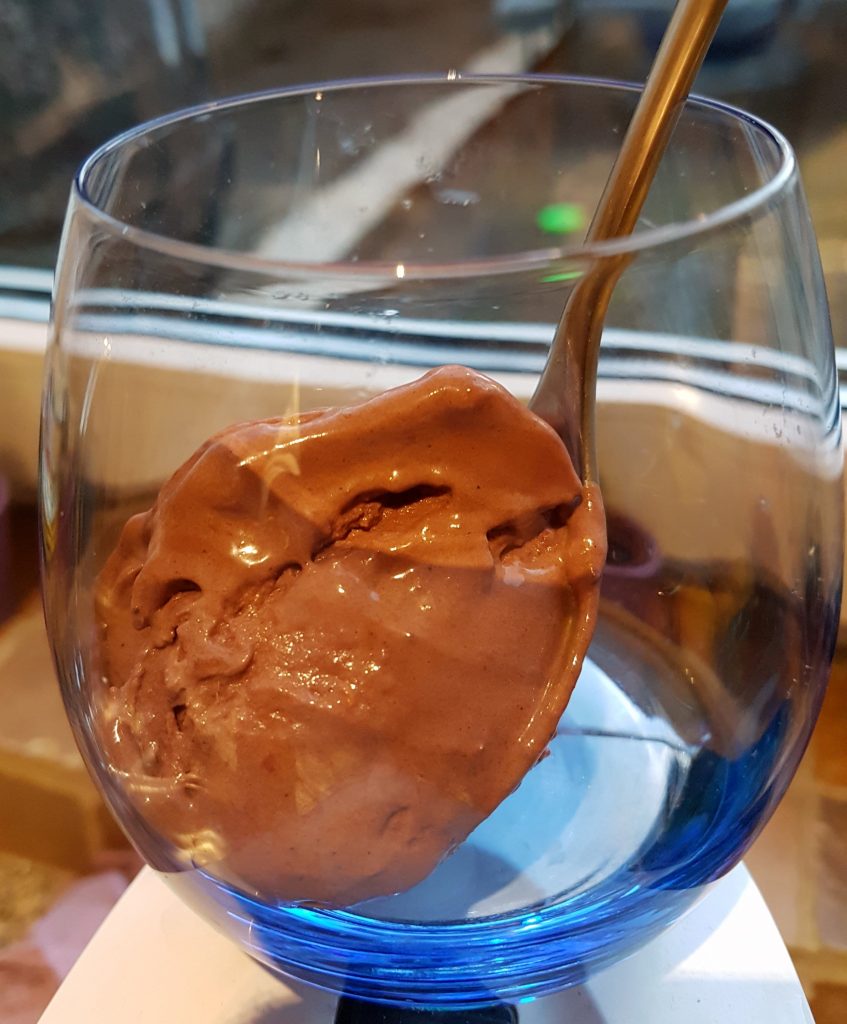
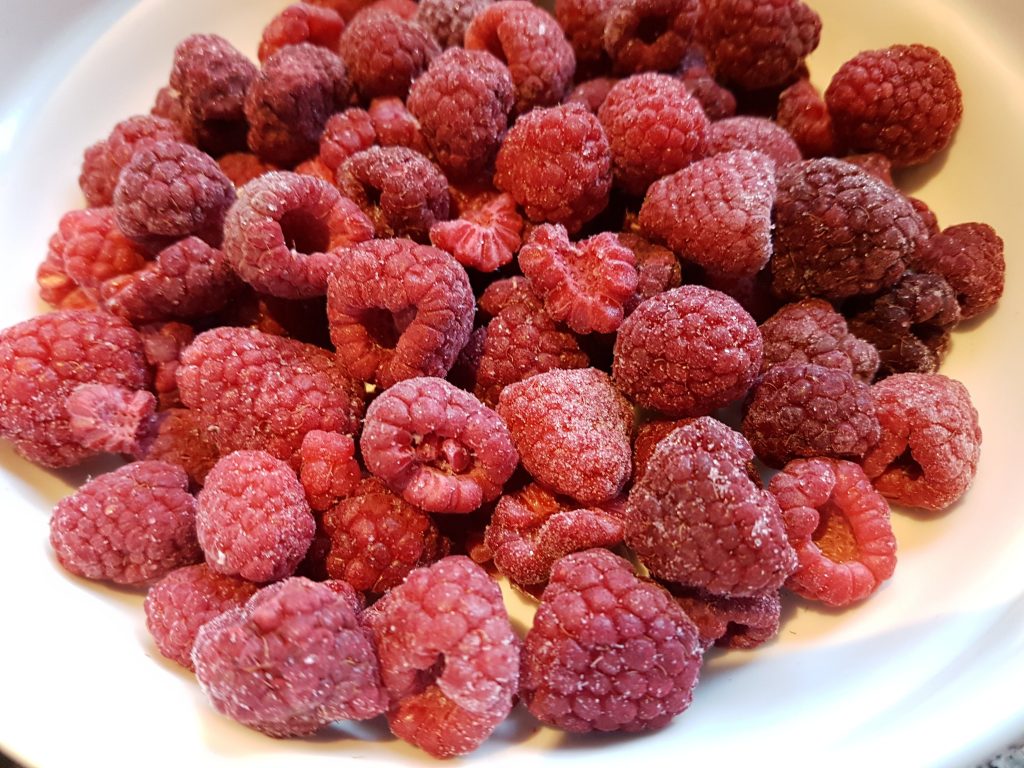
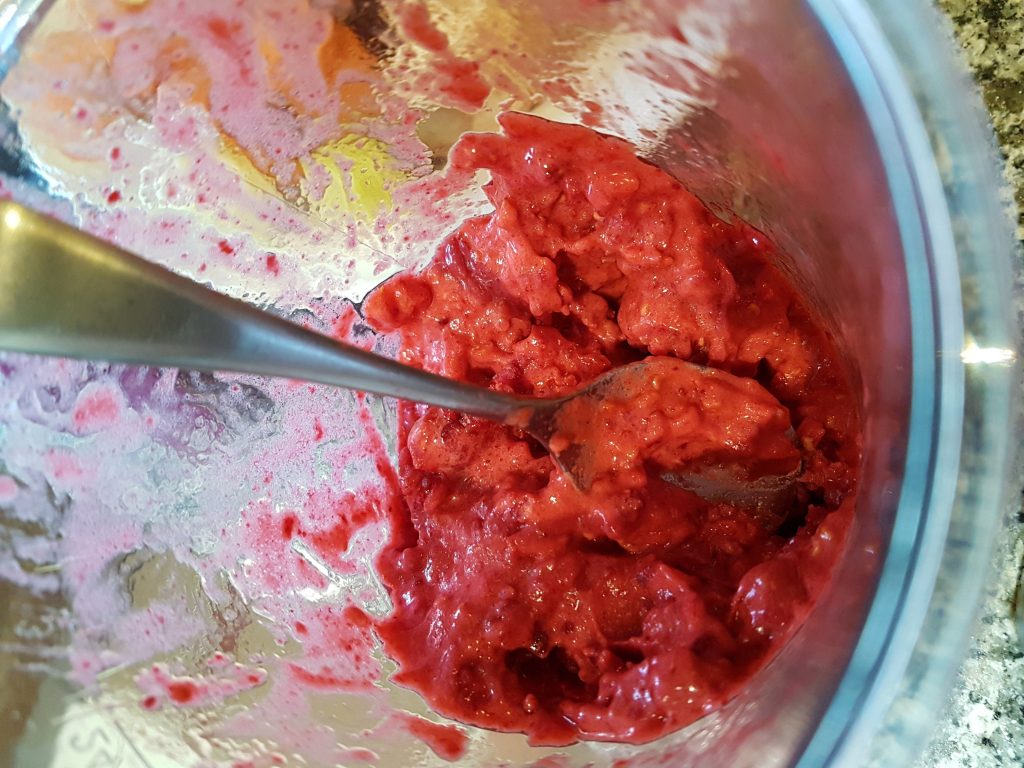
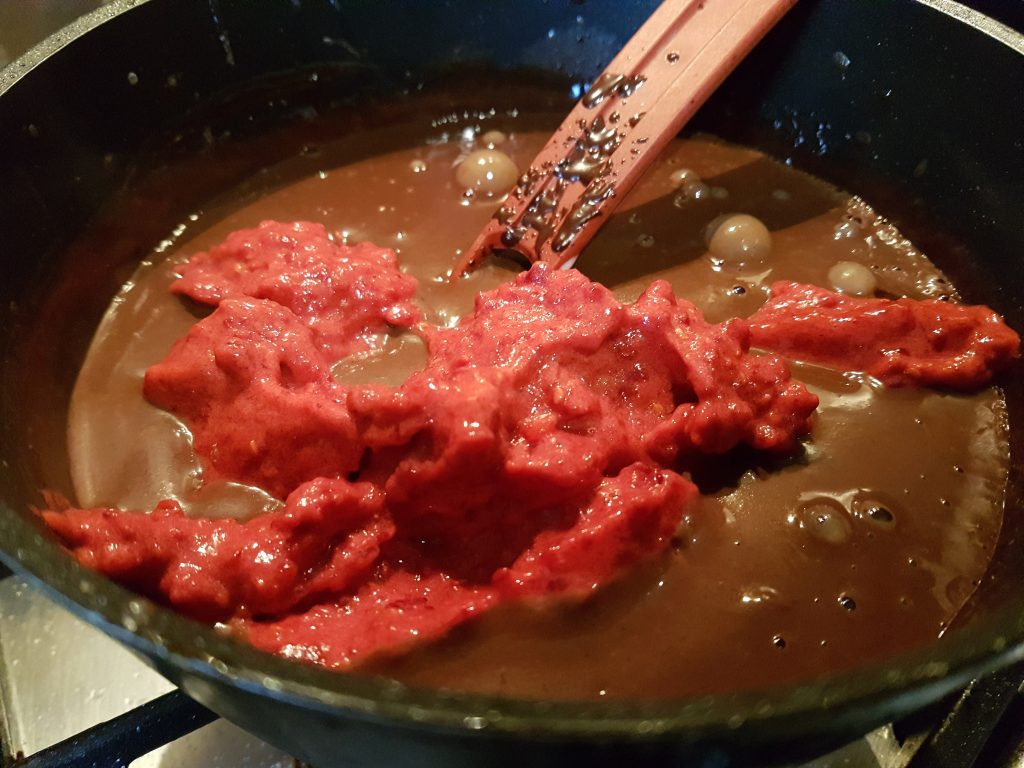
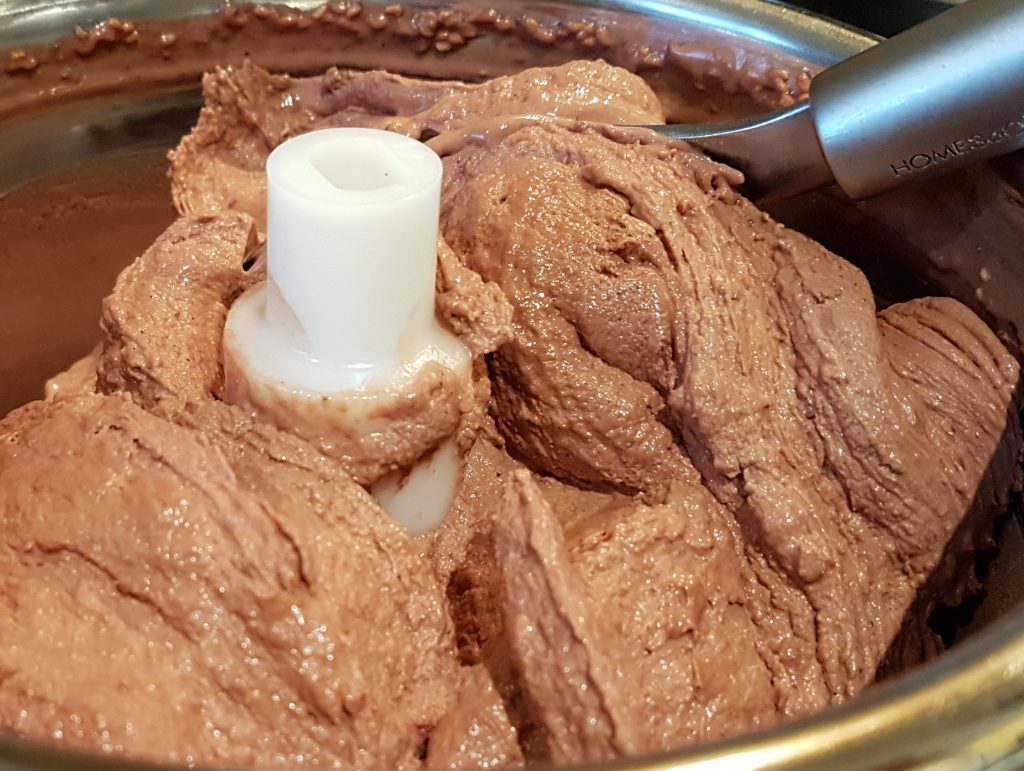
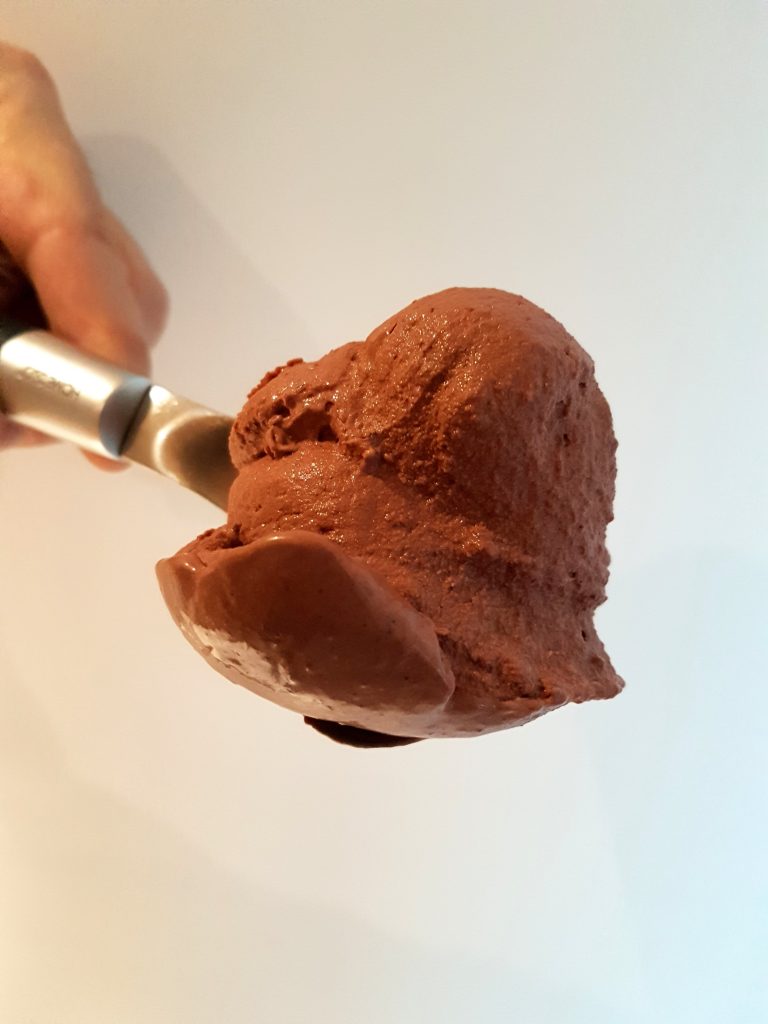
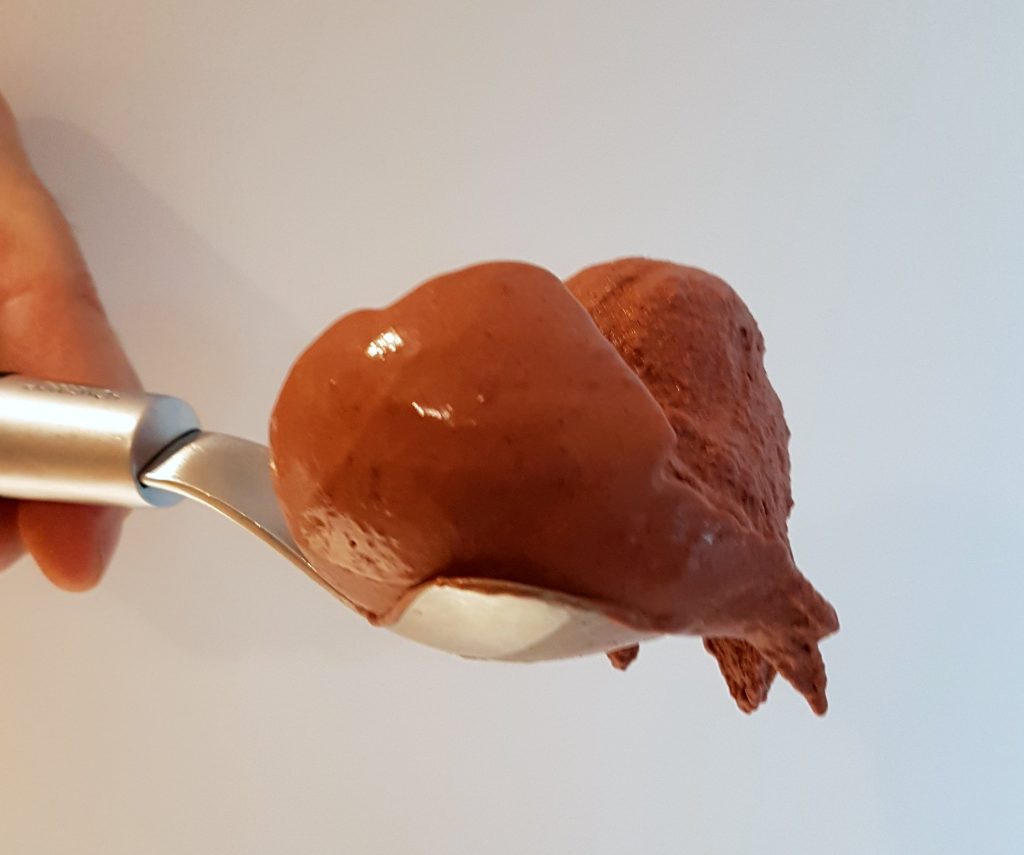
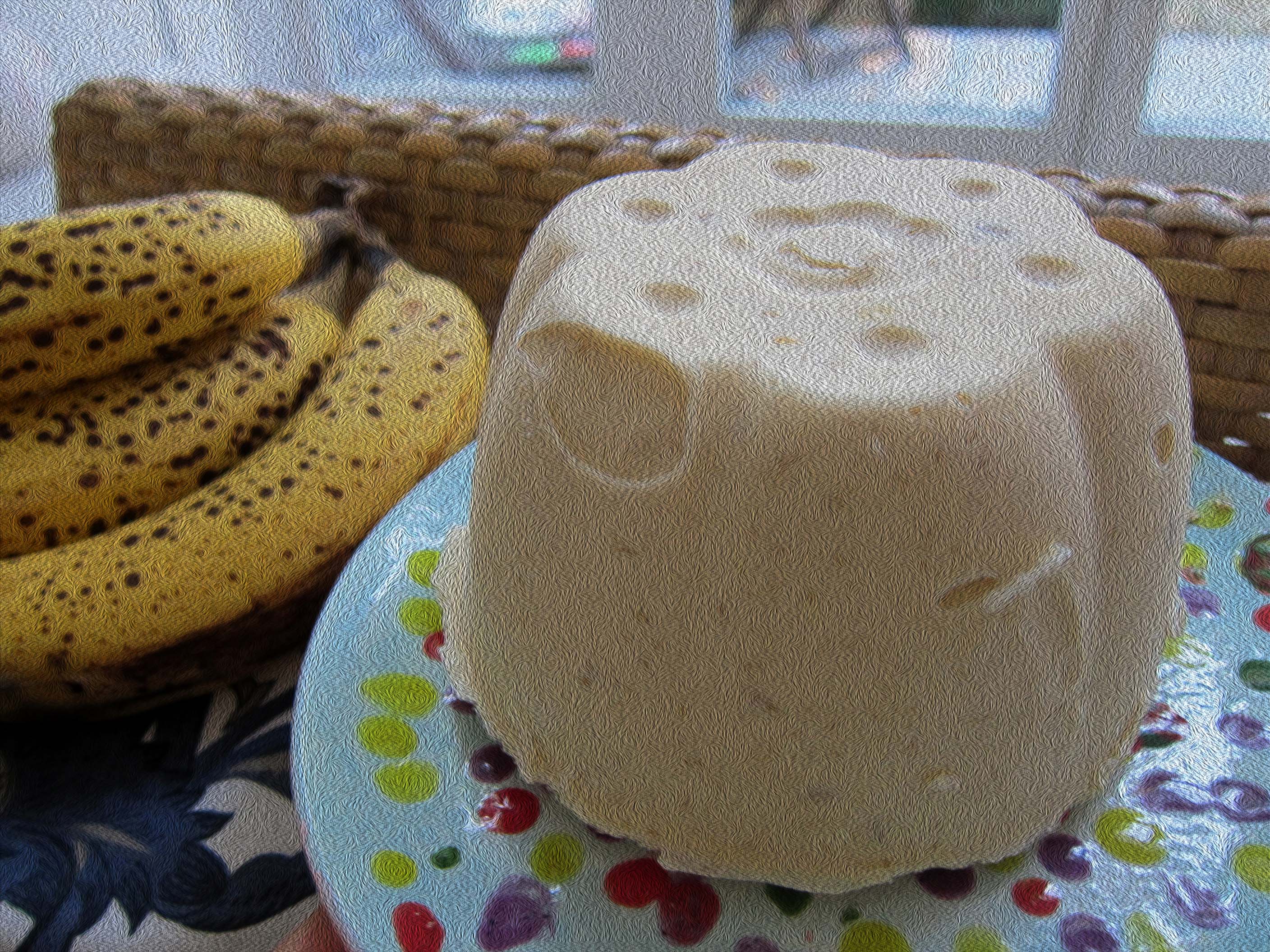




hi again! great recipe.
i wonder, when do u decide to use a whole egg instead of egg yolk, or even no egg at all?
if the chocolate im using is 70%-55% can i not use egg yolks? thank in ad.
Hi Sarah!
Thanks for your nice comment, and for your interesting question about eggs and egg yolks.
The use of eggs – or not – in ice creams is partly a matter of base-choice and the need to ensure a good overall ice cream consistency and texture (as in the great egg-based Italian and French traditions). But it can partly also be a matter of taste and mouthfeel. For custard-based ice creams, particularly those that contain a lot of liquid and little solids, the eggs are often absolutely necessary to ensure that the ice cream will hold together.
But in other recipes, where the other ingredients make the eggs less necessary, the addition of an egg can still provide some pleasant extra richness in taste, density and mouthfeel. So – consistency and/or taste! Which means that most recipes which only propose to add one egg likely will work reasonably well even without that egg – but the ice cream is bound to taste less rich, and lose out on the ‘custard-touch’ that the egg can provide. On the matter of taste, I should add that this does not necessarily mean that adding eggs always is something to strive for – much as eggs can enhance some flavours, they can also overwhelm others, making them taste more “dull”, and/or the ice cream feel too heavy or dense.
PS. Why do most ice cream recipes use (only) egg yolks? The main reason is probably that basically all the nice fat – so important for ice creams – is located in the egg yolk, together with a lot of protein and emulsifiers that help to bind otherwise free-flowing liquid and ensure a nice overall consistency. Egg whites also have some binding properties (just ask any artist about egg tempera paintings) but since they also add more water, many ice cream makers do not consider the trade-off worth it. But again – in the recipes on this site where I dare to suggest using a (whole) egg, the other ingredients are expected to be able to cope anyway 🙂 .
wow!
Many thanks for a detailed and serious answer.
good recipes, important and interesting information and accurate answers to users questions?
you’re wonderful! Thank you.
Five stars, one of the best recipes. We do it with frozen raspberries, omit the vanilla and use 90% Lindt chocolate. Fantastic, many thanks. Lili and David
Dear Lili and David, Thanks a lot 🙂